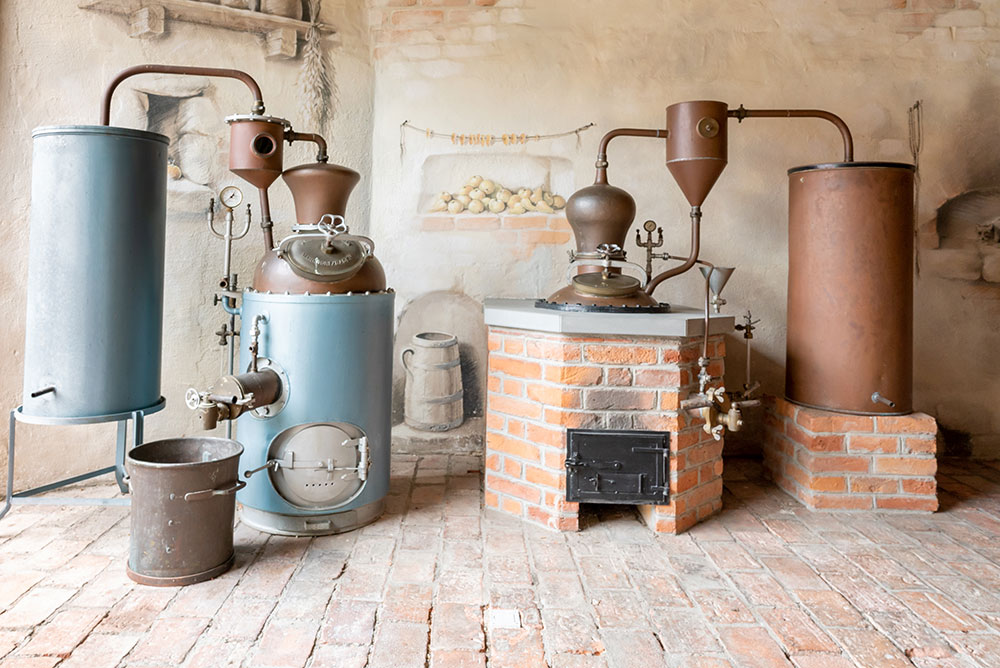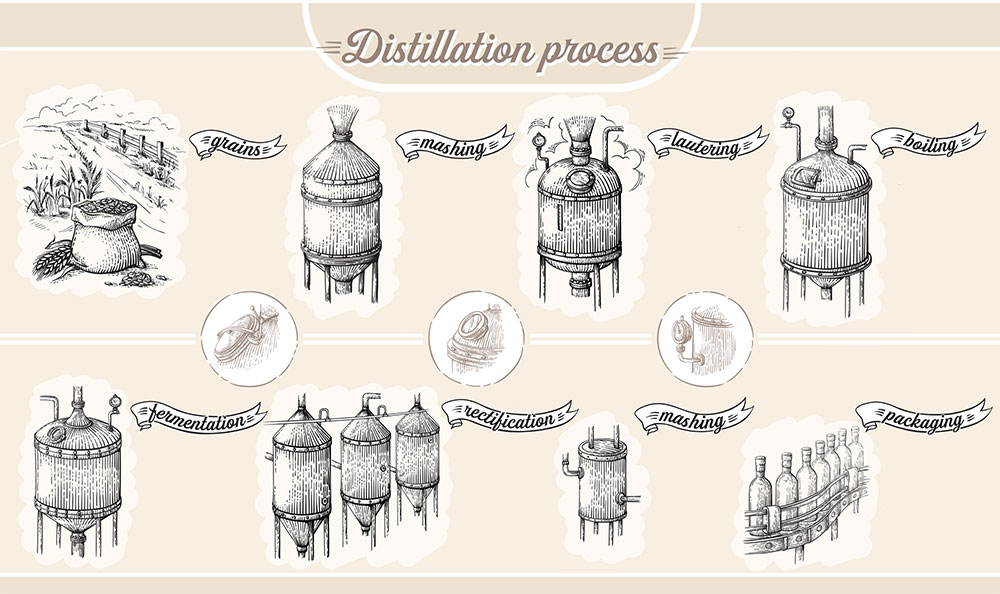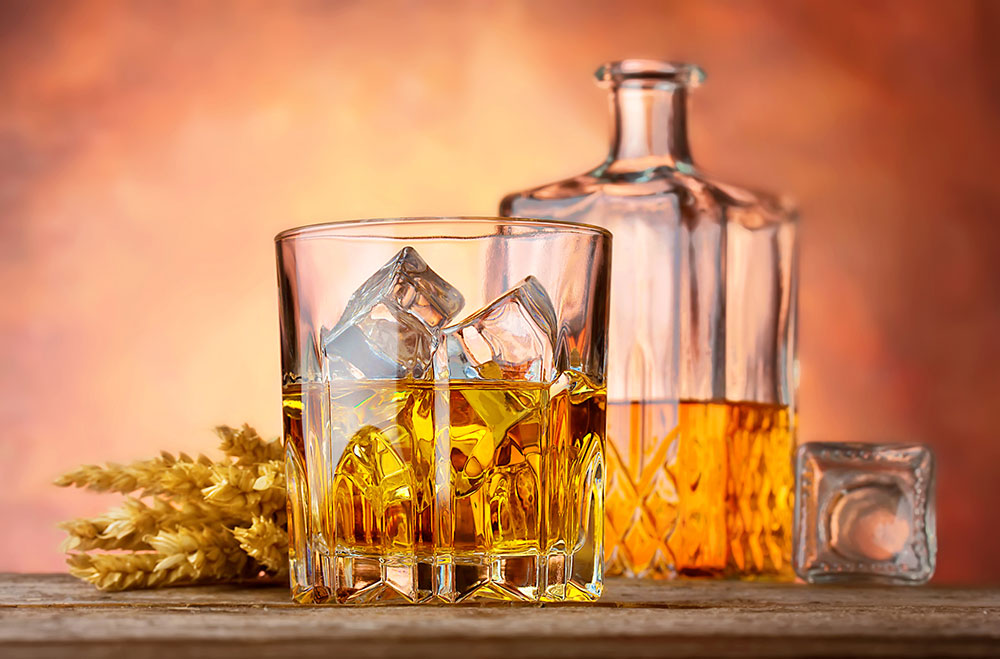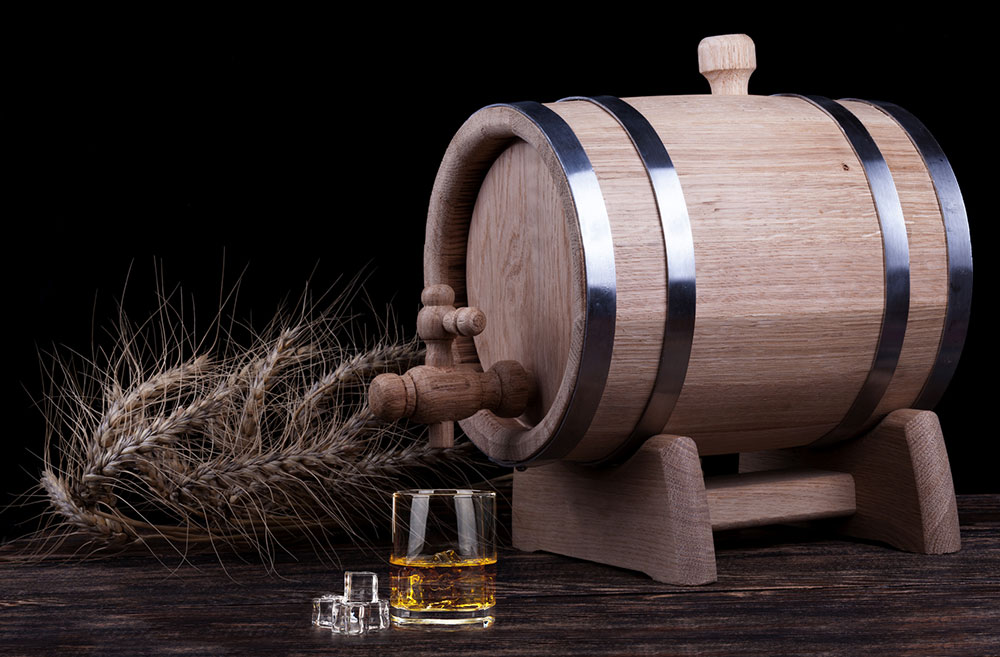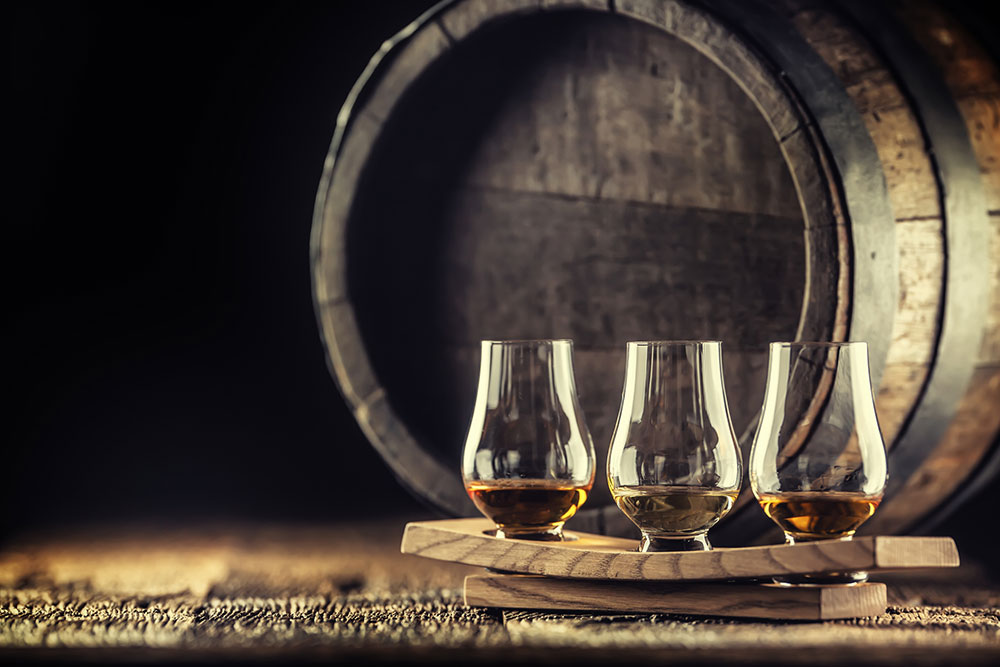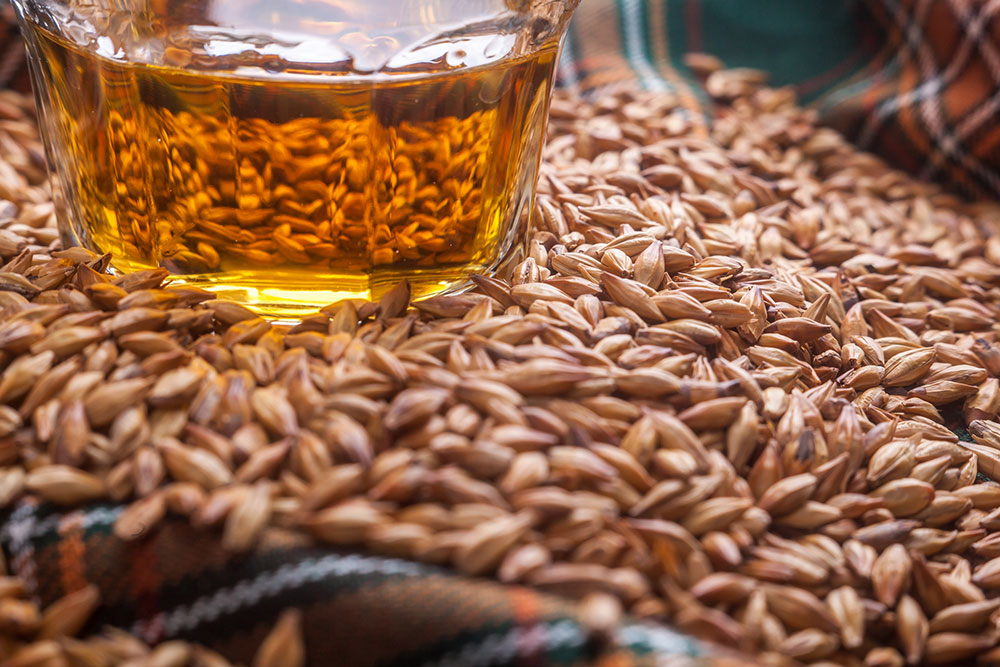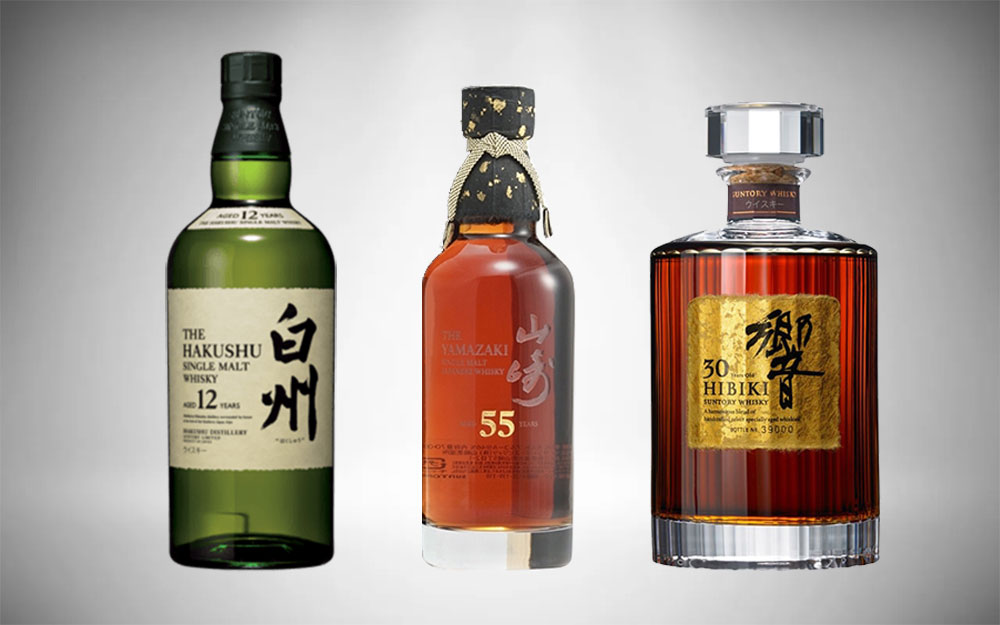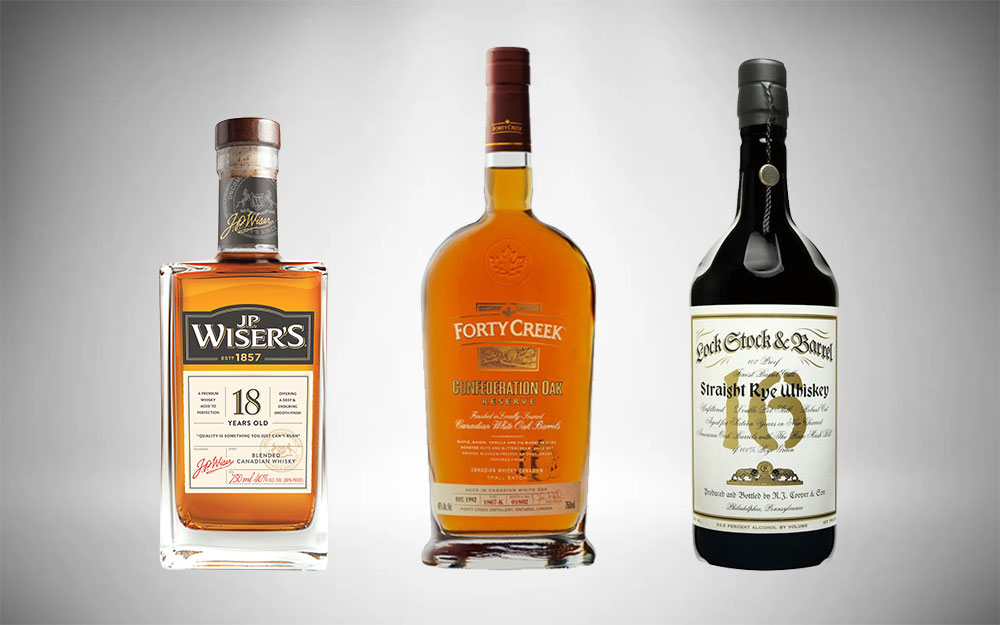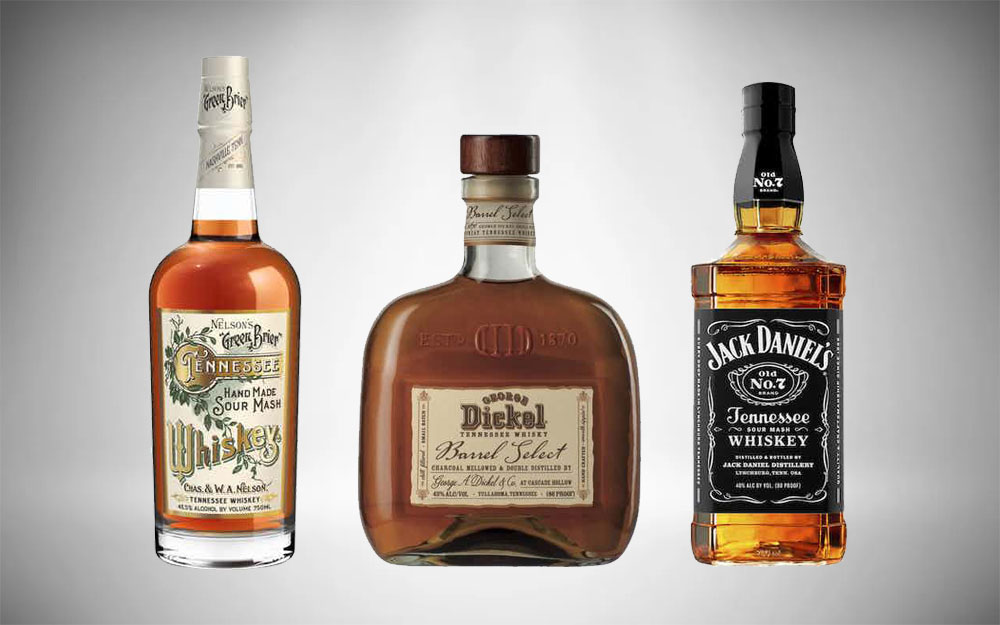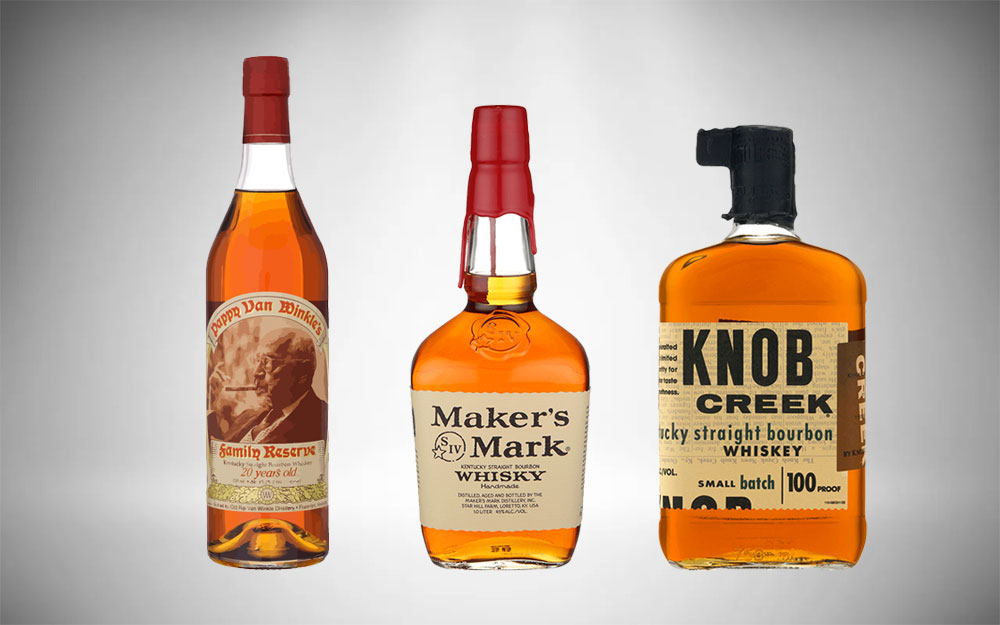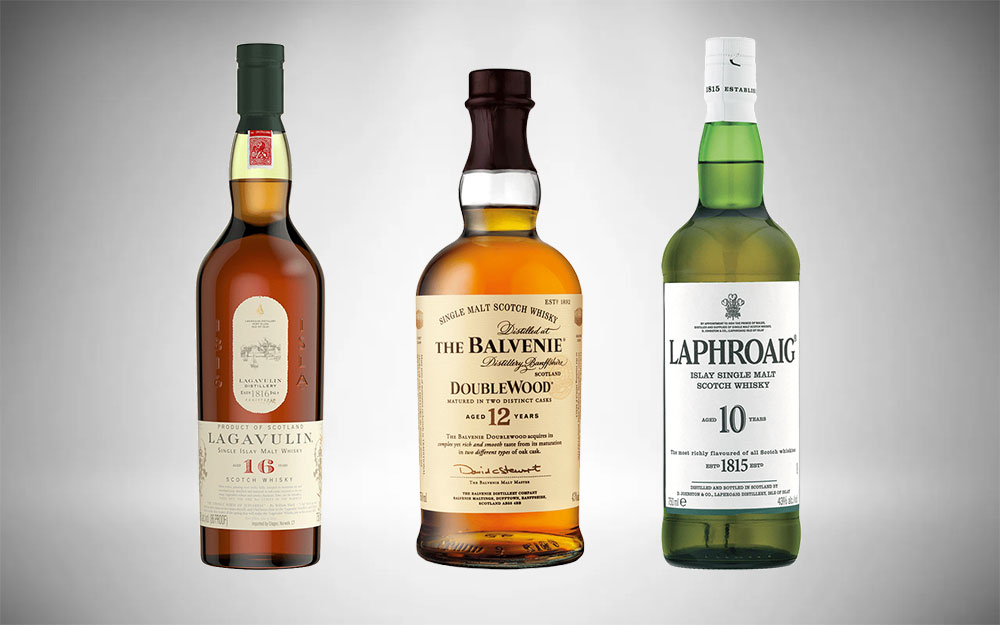Did you know that drinking whiskey can prolong your life and enhance your overall health? According to scientific research, moderate whiskey drinkers are more creative and enjoy a 50% reduced risk of strokes and heart attacks. Studies conducted by a University of California neurologist also show that moderate consumption of various types of whiskey minimizes the risk of dementia in adulthood by 50%. Drinking whisky is a healthy and pleasurable experience. Whether you want to have your drink neat, straight, or on the rocks, it’s always best to know how to differentiate your bourbon from your scotch. This post will teach you the art of putting your nose in the glass, taking a deep huff, rolling the drink in your mouth, and sensing the aroma, notes, and unique flavor profile. Hopefully, this will make it easier to find the best collection for your home bar.
Types of Whiskey Guide Contents:
Bourbon, Scotch, Whiskey: Understanding Labels6 Types of Whiskey by Country10 Types of Whiskey by Preparation StyleWhiskey 101When Was Whiskey Invented?Whisky or Whiskey, Which Is It?
Bourbon, Scotch, Whiskey: Understanding Labels
The first step to telling your bourbon from your scotch is knowing how different whiskeys are categorized. You can tell where in the world your favorite bottle comes from based on its spelling (whisky or whiskey) as well as how it’s labeled. This, in return, tells you about the grain and distillation process used. Note that each country has a unique set of regulations that governs the process of producing whisky. Therefore, each country will have a unique distillation process coupled with other factors such as brewing traditions and the natural resources within a specific region. Generally, whiskey from different parts of the world can be as diverse as chalk and cheese. Here is what the labels mean:
Bourbon — Made in the USScotch — Made in ScotlandJapanese Whisky — Made in JapanIrish Whiskey — Made in IrelandCanadian Whisky — Made in Canada
Depending on a bottle’s country of origin, it could be made from various grains like barley, wheat, corn, oats, or rye. Note that the sugar and alcohol content levels in a drink highly depend on the grain used. For instance, compared to whiskey made from rye or wheat, alcohol made from corn tends to have a sweeter taste. Also, the whiskey alcohol percentage in any bottle is around 40%, although rye whiskey has a spicier taste.
6 Types of Whiskey by Country
If you walk into any well-stocked liquor store, the parades of whiskey are likely to leave you a little confused. It often gets a little challenging for beginners, especially those who are yet to know the difference between their whiskeys, gins, brandy, and vodkas. If you are serious about knowing your whiskeys, here’s a guide that may come in handy:
1. Scotch Whiskey
Scotch liquor, aka nectar of the gods, is made in Scotland. It is a whiskey made from barley, wheat, or rye, and it often has a smoky taste and flavor profile. Producing scotch involves malting, drying, mashing, fermenting, distilling, and allowing the beverage to mature for at least 3 years in oak barrels. Scotland has over 100 distillers, and some of the regions known to produce the best whiskey include Campbeltown, Speyside, and Islay, just to mention a few. The taste of scotch will highly depend on which part of Scotland it came from. Scotch from Islay, for instance, tends to have a strong smoky flavor, while whiskey from Lowland is sweet and light. The age of scotch may also play a significant role in defining its taste. Generally, the beverage has a strong character with notes and flavors ranging from vanilla, leather, almond, honey, nectarine, and dried fruit. It’s also essential to understand that there are different types of scotch, including single malt whiskeys, blended whiskey, blended malt whiskey, and single grain whiskey. Some of the best scotch brands to buy include Glenfarclas 25 Year Old, Bruichladdich, and of course, Johnnie Walker.
Highlights
Made in ScotlandIngredients: malted barley (sometimes mixed with wheat or corn)Aged for 3 or more years in oak casks
2. Bourbon Whiskey
Bourbon is an American-style whiskey made initially from rye. However, once the Europeans settled in Kentucky, they grew corn in plenty, leading to bourbon made from corn. Unlike scotch that has a 3-year aging period, bourbon has no minimum aging time. Even so, “straight bourbon” must age in charred oak barrels for a minimum of 2 years. American whiskey or bourbon will often have vanilla tones and caramel sweetness. It will also have a smoky flavor, especially if its production process involves aging it in a charred oak barrel. The Old Forester 86 Proof Kentucky Straight Bourbon Whisky and Pappy Van Winkle’s are just some of the best bourbon whiskeys.
Highlights
Made in the U.SIngredients: 51% cornNo aging or aged for at least 2 years in charred oak barrels to make straight bourbon80 proof
3. Tennessee Whiskey
Technically, Tennessee whiskey is bourbon (American-style whiskey). However, it falls into a different classification mainly because of the production style. The state laws compel distillers to take the alcohol through a unique filtering step dubbed the Lincoln County Process. Consequently, Tennessee whisky has a slightly sweeter, somewhat mellower tone compared to regular bourbon. Also, it’s a bit smokier or sooty because of charcoal filtering and the fact that it’s aged in charred oak barrels. It’s safe to say that this whiskey is the nicer kind of bourbon. Hands down, one of the best-loved Tennessee whiskeys is Jack Daniels.
Highlights
Bourbon made in TennesseeIngredients: corn (51-79%) or rye (51%-100%)Bottled in bondAged for at least 4 years100 proof
4. Irish Whiskey
It’s said that whiskey originated in Ireland and was first produced in the 6th century. Compared to other types of whiskey, Irish whiskey has a smoother flavor and is easy to sip neat. The beverage is made using a mash of malt and distilled using caramel coloring and water. It is then distilled and aged for 3 years or more. Irish whiskey has unique characteristics. For instance, it is less sweet compared to American bourbon. Then again, it’s not as smoky or sooty as scotch. Irish whiskey is also easy to consume, thanks to the triple distillation process. If you’re looking for Irish whiskey, some of the top beverages in the market include The Sexton Single Malt and Jameson Black Barrel.
Highlights
Made in IrelandIngredients: barley (sometimes wheat or corn) Must contain caramel and waterTriple distillation runs Aged for least 3 years
5. Canadian Whisky
To date, most people still refer to Canadian whisky as Canadian rye whiskey. This is because eastern Canadian winters are harsh, and one of the few crops that can survive the adverse weather is rye. However, over time, agricultural advancements have made it possible for the region to enjoy bountiful harvests of corn nearly all year round. Currently, American whiskey tends to contain more rye than Canadian whiskey. Canadian whiskies are sweet, light, spicier, and packed with flavors. Like Irish whiskey, they are easy to drink and are ideal for making cocktail mixes. They are also similar to scotch in that the alcohol is aged in barrels for a minimum of 3 years.
Highlights
Ingredients: rye mixed with other types of grain such as corn, barley, or wheat)Made in CanadaAged for a minimum of 3 yearsOften contains caramel and other types of flavoring
6. Japanese Whisky
Japanese whiskey is made using the highest distillation standards to make its taste nearly similar to scotch. It’s arguably a better alternative mainly because of the distillation process that uses a broader array of still sizes and shapes. This ensures the production of quite distinct Japanese whiskey tastes and flavors. While it tastes almost like scotch, it has a bold and complex yet well-balanced character. Compared to scotch, the beverage has more flavor notes and a more interesting character. According to Jim Murray’s Whisky Bible, the Yamazaki Single Malt Sherry Cask 2013 ranks top on the list of the best whiskeys worldwide.
Highlights
Made in JapanIngredients: mainly malted barley It follows an almost similar distillation process as scotchAged in wooden barrels for at least 3 years
10 Types of Whiskey According to Preparation Style
It’s hard to teach the art of tasting and nosing whisky. After all, everyone’s sense of taste and smell is hard-wired in their brain. On the bright side, decoding aromas and flavors is something infused in human nature. Here are some terms you should know to help you connect the labels on a whiskey bottle to the taste and aroma to expect:
1. Malt Whiskey
Malt is made by soaking, germinating then drying raw barley to stop the germination process. Depending on the region where malt is produced, the distillers could burn the barley to give it a classic peaty or smoky flavor. The choice of barrels used may also play a significant role in enhancing the flavor profile of malt whiskey. “Malt” is made from malted barley. However, some distillers use other types of malted grain. That’s why you may find bottles labeled buckwheat malt whiskey or rye malt whiskey.
2. Single Malt Whiskey
Single malt whiskeys are essentially scotch made from one distillery. It’s called “single” because it’s produced from a single location and not necessarily one batch. Compared to blended whiskeys, people perceive single malts as superior in quality because you can tell the distillery that made your favorite drink and where it is located. Because the production process of single malts takes place in one location, each drink will have flavors unique to the region where it was produced. This gives makes each single malt brand look, feel and taste like a masterpiece handcrafted by the locals. Another aspect unique to single malts is that they are aged for five or more years. The finished product has a 40—65% ABV.
3. Straight Whiskey
Different types of whiskeys could fall under the “straight” classification if they are made following specific guidelines. Distillers can make straight wheat, malt, rye, or even bourbon whiskey if they ensure the following:
The whiskey is made from not less than 51% of one type of grainIt is aged in new charred oak casks for at least 2 yearsThe finished product has an 80% maximum ABV
If you find a whiskey labeled “straight whiskey,” this means its production process didn’t meet the required 51% requirement of a single grain. In short, the distiller cannot label the whiskey straight rye whiskey or straight bourbon whiskey. Moreover, bottles labeled straight whiskey may imply that the distillers blended at least 2 straight whiskeys made within the same region.
4. Blended Whiskey
Blended whiskey is made by blending different types of whiskey, such as grain and malt beverages. The aroma and flavor profile of a drink may vary from one distillery to another. Typically, distillers use about 20% straight whiskey and add 80% of one or different types of whiskey to create a unique flavor. Blended whiskeys have a complex character that most companies, especially well–established distillers, will strive to maintain. Even though such drinks are often more affordable than single malts, it doesn’t necessarily mean they are inferior in quality. On the contrary, blended whiskeys have complex flavors and characters that true whiskey lovers appreciate.
5. Light Whiskey
One of the common misconceptions is that light whiskey is a low-calorie beverage. The truth is that the term light has more to do with color than calories. This type of whiskey was introduced in the 60s and had an ABV between 80 and 95%. Its name hinges on the fact that the beverage is has a lighter hue than standard whiskey.
6. Spirit Whiskey
Spirit whiskeys emerged when the world experienced a shortage of fully aged whiskeys. They are produced by blending 5% single grain whiskey, and a maximum of 20% straight whiskey. Essentially, the liquor ages quickly but develops a flavor profile that resembles the taste of alcohol. A lot has changed since spirit whiskey was first introduced. Currently, distillers use advanced distillation trends to create unique and exciting flavor options.
7. Grain Whiskey
Grain whiskey, as the name implies, is made from grain and not malted barley. Distillers can use one or multiple types of grain, including corn and wheat. Compared to malt whiskey, grain whiskey is distilled in cheaper column stills and isn’t as flavorsome. Another difference is that grain whiskey requires a shorter maturation period. Whiskeys often develop a signature flavor profile during the aging process. Because this step isn’t lengthy when making grain whiskey, the alcohol produced has a cleaner profile. It’s easy to drink and ideal for blending with other types of whiskeys.
8. Rye Whiskey
As you may have guessed, rye grain is the main ingredient used in making rye whiskey. Distillers use 51% rye mash and blend it with other ingredients such as malted barley, corn, or wheat. Other set standards that rye whiskey must meet include:
The beverage should have a maximum ABV of 80%Aged in charred new oak barrels for 2—4 years for color and flavor enhancementThe liquor should have a maximum of 125 proof or 62.5% ABV before bottling
9. Wheat Whiskey
Again, distillers must follow strict production standards when producing wheat whiskey. These standards include:
Must contain at least 51% wheatAging takes place in new charred oak containersBeverage ABV must not exceed 62.5% before entering the barrelThe bottled product should have at least 40% ABV
10. Corn Whiskey
Unlike wheat and rye whiskey, which must contain at least 51% of the main grain, corn whiskey has a minimum of 80% corn. Distillers have the option of aging the beverage in charred or un-charred oak barrels. Corn whiskey is a top choice for those looking for a drink packed with sweet flavors. It contains notes of marshmallows and flavors like browned butter and honey.
Whiskey 101
If you’ve never nursed your nerves with a glass of whiskey before, you probably don’t know what the drink is or how it’s made. Well, whiskey is a distilled alcoholic beverage. It’s among the world’s most popular drinks after wines and beers.
What Is Whiskey Made Of?
Whiskey is made from grains. Even though most distillers use barley, the beverage can also be made from rice, wheat, corn, millet, quinoa, and rye. The range of whiskey ingredients used often varies from one distiller to another.
How Is Whiskey Made?
Depending on the brewing traditions of the distilling company, whiskey could be made using malted or un-malted grain. The grain is then mashed into grist and poured into hot water to naturalize sugars. Distillers then add yeast, a compound that helps in fermentation, turning the sugary syrup into alcohol. When producing malted whiskey, the brewers distill the alcohol to create a strong spirit. The process of producing un-malted whiskey involves allowing the beverage to mature in wood barrels. These barrels are often made from charred or un-charred white oak. Note that the option used plays a role in dictating the color and flavor of the whiskey produced.
Whiskey Classification
There are two main classifications of whiskey. The first one focuses on the age of the beverage while the second concentrates on how it’s blended to enhance its flavor and overall taste. Distillers who focus on the age of the drink will indicate the age of the whiskey on the bottle. If you don’t find such labeling on the bottle, your drink is probably from a distiller focusing on taste and the flavor profile. You can trust both kinds of distillers to produce top-quality whiskey. Those that concentrate on taste do an impressive job at putting the taste buds of drinkers to the test. On the other hand, older whiskey is expensive because it has a complex blend of flavors and tastes.
A Common Myth about Whiskeys
Aged whiskey is darker in color: this is a common myth that cannot be further from the truth. Contrary to popular belief, the age of whiskey has little to do with its color. Dark whiskey has a better aesthetic appeal, sure. But this merely indicates the use of caramel as part of the ingredients or the type of wood barrel used.
When Was Whiskey Invented?
The origins of alcohol brewing are traced back to ancient Mesopotamia. But it was only in later centuries when monks in European monasteries learned to create whisky by distilling fermented grains. This knowledge landed in Ireland and Scotland in the 11th and 13th centuries. Now, you’ve heard people call whiskey “moonshine,” right? Well, this nickname came around in the 18th century when Scotland introduced a tax on alcohol production. Distillers would avoid taxation by working at night when the smoke from distillation fires was less apparent. At around the same time, whiskey had made its way into America. The same trend of heavy taxation followed suit, but Americans refused to brew in the dark. Instead, they matched the streets in a protest dubbed the Whiskey Rebellion. By 1802, America ditched the heavy taxation. Some of the well-established distillers that emerged in America in the 1960s include Jack Daniels and Jim Beam.
Whisky or Whiskey, Which Is It?
So, whisky or whiskey, which is the correct spelling? Well, it all depends on where your favorite bottle is made. Both whiskey and whisky are correct spellings. However, the inclusion or exclusion of the “e” plays a significant role in telling the story behind the making of a specific bottle.
Final Thoughts on Different Whiskeys
In a world with full parades of different types of whiskey, choosing the best drink can be daunting. Today, you can find more brewing companies than ever before and so many options to explore in terms of whisky quality, flavor profiles, and price. We hope that this guide has equipped you with answers to make your selection easier. So, a little whisky or whiskey is good for the heart (no pun intended). Got a bottle of choice? Or, know something we didn’t cover about the different types of whiskeys? Leave us a comment below!
